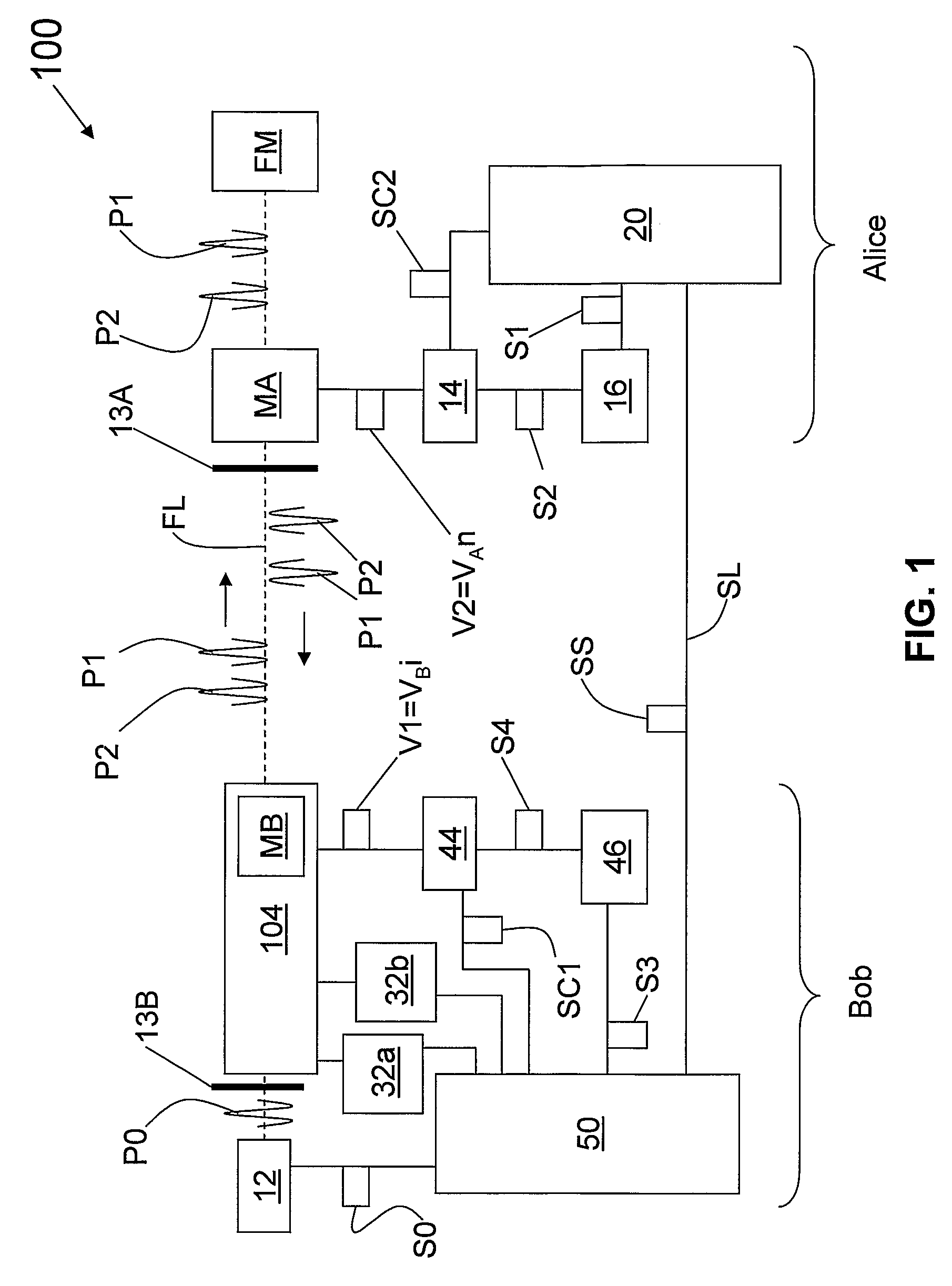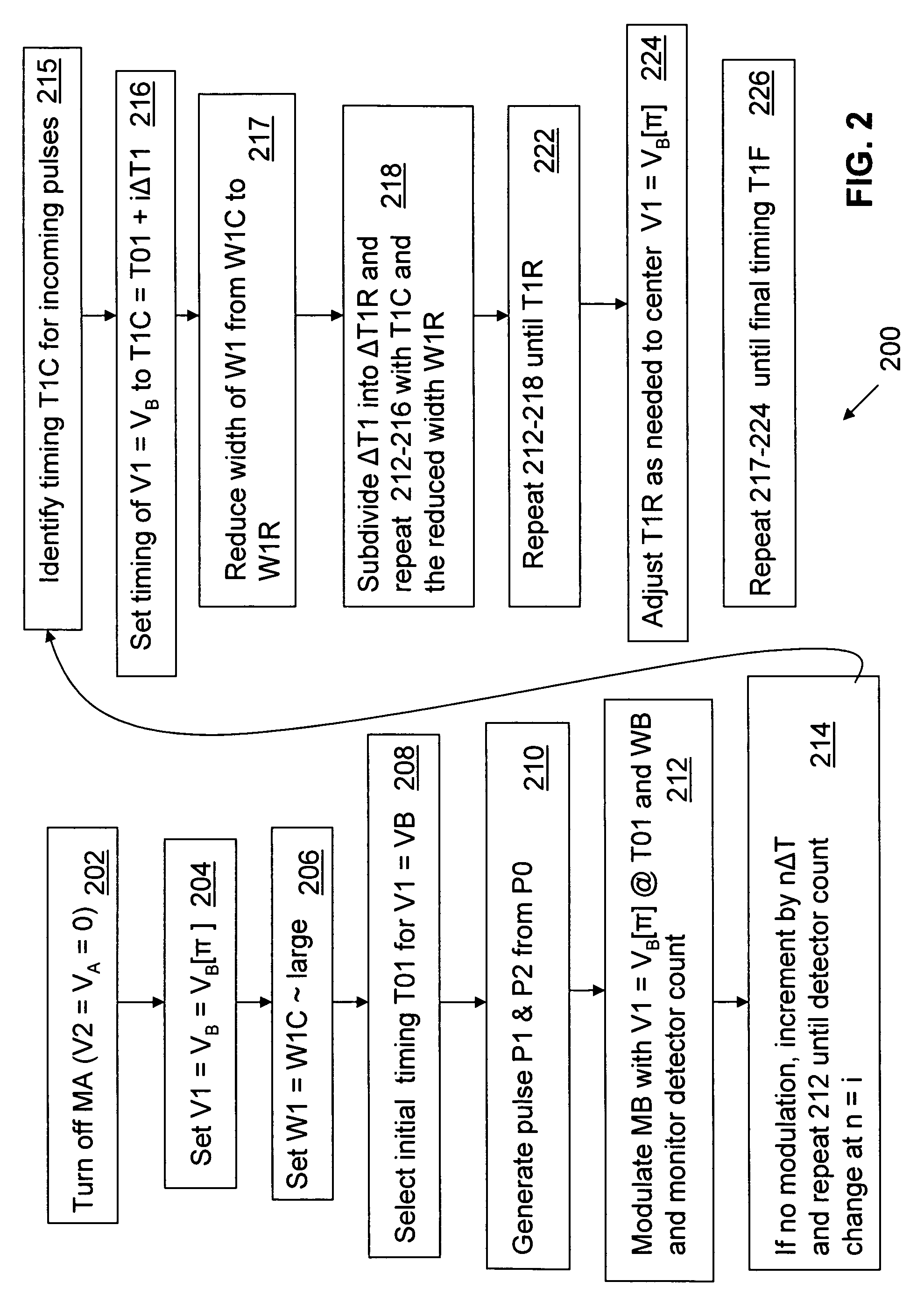Modulator timing for quantum key distribution
a modulator and key technology, applied in the field of quantum cryptography, to achieve the effect of reducing modulation errors
- Summary
- Abstract
- Description
- Claims
- Application Information
AI Technical Summary
Benefits of technology
Problems solved by technology
Method used
Image
Examples
Embodiment Construction
[0014]The present invention relates to and has industrial utility with respect to quantum cryptography, and is directed to systems and methods for performing modulation of quantum signals in a QKD system. The invention is discussed below in connection with a two-way QKD system, though the invention is applicable to both one-way and two-way systems. In the discussion below, a “quantum signal” or “quantum pulse” has an average number of photons μ≦1, and a “non-quantum signal” or “non-quantum pulse” has an average number of photons μ>1.
Ideal Operation of a Two-Way QKD System
[0015]For the sake of illustration, the present invention is described in connection with a two-way QKD system. FIG. 1 is a schematic diagram of a two-way QKD system 100 that includes two QKD stations, Alice and Bob. Bob includes laser 12 that emits light pulses P0. Laser 12 is coupled to a time-multiplexing / demultiplexing (M / D) optical system 104. M / D optical system 104 receives input pulses P0 from laser 12 and sp...
PUM
 Login to View More
Login to View More Abstract
Description
Claims
Application Information
 Login to View More
Login to View More - R&D
- Intellectual Property
- Life Sciences
- Materials
- Tech Scout
- Unparalleled Data Quality
- Higher Quality Content
- 60% Fewer Hallucinations
Browse by: Latest US Patents, China's latest patents, Technical Efficacy Thesaurus, Application Domain, Technology Topic, Popular Technical Reports.
© 2025 PatSnap. All rights reserved.Legal|Privacy policy|Modern Slavery Act Transparency Statement|Sitemap|About US| Contact US: help@patsnap.com



